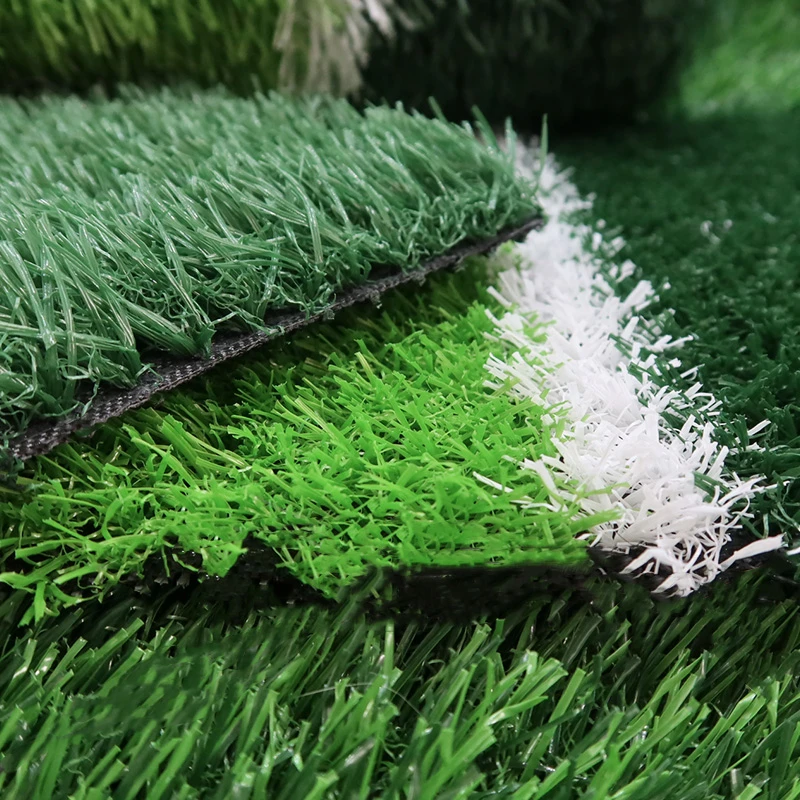
- Afrikaans
- Arabic
- Belarusian
- Bengali
- Czech
- Danish
- Dutch
- English
- Esperanto
- Estonian
- Finnish
- French
- German
- Greek
- Hindi
- Hungarian
- Icelandic
- Indonesian
- irish
- Italian
- Japanese
- kazakh
- Rwandese
- Korean
- Kyrgyz
- Lao
- Latin
- Latvian
- Malay
- Mongolian
- Myanmar
- Norwegian
- Persian
- Polish
- Portuguese
- Romanian
- Russian
- Serbian
- Spanish
- Swedish
- Tagalog
- Tajik
- Thai
- Turkish
- Turkmen
- Ukrainian
- Urdu
- Uighur
- Uzbek
- Vietnamese
fake grass on football fields
Dec . 11, 2024 18:48 Back to list
Fake Grass on Football Fields A Growing Trend in Sports Infrastructure
In recent years, the use of artificial turf on football fields has gained significant traction across the globe. This trend, often characterized by synthetic fibers designed to mimic natural grass, is changing the landscape of how football is played, maintained, and experienced. While the initial appeal of fake grass lies in its longevity, uniformity, and reduced maintenance costs, it raises a variety of considerations that players, coaches, and facility managers must contemplate.
The Appeal of Artificial Turf
One of the most compelling advantages of artificial turf is its durability. Natural grass can suffer from wear and tear due to the rigorous activity of football games and practices, especially in regions with varying weather conditions. In contrast, fake grass remains resilient under heavy foot traffic, allowing it to maintain its appearance and functionality throughout the seasons. This consistency can lead to increased usage, as teams are less likely to cancel practices or matches due to poor field conditions.
Moreover, artificial turf drains water more effectively than natural grass, reducing the risk of games being postponed due to soggy fields. This efficient drainage system means that athletes can play in a wider range of weather conditions without compromising the safety or integrity of the playing surface. For schools and organizations looking to maximize their investment in athletic facilities, artificial turf represents an attractive option.
Maintenance and Cost-Effectiveness
The maintenance requirements for artificial turf are considerably lower than those for natural grass. While maintaining a natural grass field entails regular mowing, watering, fertilizing, and pest control, synthetic fields simply require periodic brushing and cleaning to keep the fibers upright and free of debris. This ease of maintenance translates into cost savings for schools, clubs, and municipalities that allocate budget resources toward field upkeep.
Furthermore, synthetic fields have a longer lifespan, which can reach upwards of 10 to 15 years with proper care. While the initial installation cost is usually higher than that of natural grass, the long-term savings can offset the investment over time, making artificial turf an economically sound choice for many organizations.
fake grass on football fields

Health and Safety Concerns
Despite the numerous benefits, the adoption of artificial turf has not been without controversy. Concerns regarding the materials used in synthetic turf, particularly rubber infill, have sparked debate. Some studies have suggested a possible link between exposure to these materials and health risks, including higher rates of certain cancers among athletes, although no definitive conclusion has been reached.
Additionally, the playing surface of artificial turf tends to retain heat, leading to higher surface temperatures during hot weather. This can create challenging conditions for players, potentially increasing the risk of heat-related illnesses. As such, measures must be taken to monitor and mitigate these risks, including the implementation of water breaks and acclimatization periods to ensure athlete safety.
Impact on Gameplay
The transition from natural grass to artificial turf also influences the way football is played. The consistent surface can lead to faster game play, with players often reporting increased ball speed and predictability in the bounce. However, some athletes argue that the hardness of synthetic fields can increase the likelihood of injuries, such as sprains and strains. This has led to ongoing discussions among coaches, trainers, and players about the best practices for training and competition.
Future Trends in Artificial Turf
As technology progresses, the next generation of artificial turf is emerging, focusing on improving safety, performance, and environmental sustainability. Innovations include bio-based infills and turf made from recycled materials that aim to reduce the ecological footprint of synthetic fields. These advancements may help alleviate some health and environmental concerns associated with earlier generations of artificial turf.
In conclusion, the shift towards fake grass on football fields encapsulates a broader trend in sports infrastructure that prioritizes sustainability, cost-effectiveness, and durability. However, it is essential for stakeholders to remain vigilant about the implications of this transition on player health and performance. As further research continues and technology advances, the landscape of artificial turf will likely evolve, promising exciting developments for the future of football. Whether embraced or critiqued, the impact of synthetic surfaces on the game is undeniable, paving the way for a new era in football playing fields.
-
The Benefits of Artificial Turf for Indoors
NewsJul.15,2025
-
How Artificial Grass Suppliers Ensure Quality Products
NewsJul.15,2025
-
Artificial Grass and Pets: A Space for Relaxation
NewsJul.08,2025
-
Balcony & Outdoor Decoration with Artificial Grass
NewsJul.08,2025
-
Best Indoor Artificial Grass for Home
NewsJul.07,2025
-
Best Pet Turf for Dogs: Safe & Durable Artificial Grass Options
NewsJul.07,2025
Products categories









